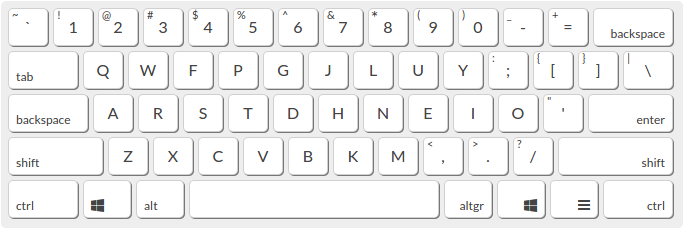I use a keyboard configuration called Colemak, meaning when I type, the letters that appear aren’t the ones on the keys. I learned Colemak about 10 years ago, when I decided I wanted to learn to touch-type; you become quickly committed to all-finger touch-typing when even glancing at the keyboard, let alone trying to hunt-and-peck, only throws you off further. At work currently I have to use QWERTY again, and find it really unergonomic, having to stretch and shake off my hands with some regularity.
Colemak, like its inspiration Dvorak, shuffles the keys around such that common letters are closer to the home row (the middle one that your fingers will rest on) and more often assigned to your stronger fingers. Both Colemak and Dvorak also take into account, in different ways, factors like hand alternation (easier to type left-right-left-right than right-right-right-right) and reducing the same-finger ratio (something Qwerty will ask you to do a lot, eg LOL). Colemak advocates will argue that it gets these issues a bit more right than its predecessor, which revealed issues that Colemak has cleaned up.

But where Colemak differs most is that its changes are less comprehensive. Dvorak takes a purist approach, reconfiguration from the bottom up, requiring a lot of adjustments from the user. I understand this makes it harder to learn, but it also has some active costs, such as separating the keys Z, X, C and V, a gang which any power user of text finds invaluable.
Colemak ensures some continuity: Q stays in the corner – it’s a rare key so where was the harm of keeping it as is? (Dvorak shoved it to the bottom.) Similarly w, b, h, a, m all stay put too, little familiar islands that you don’t need to remap. And importantly, those text manipulation keys stay reassuringly where they always were. This little family may be purely arbitrary – what love should there be, really, between a c and a v? – but later keyboard users took that contingency and made it valuable, a step that can’t be recast by committee.
It’s important to dismantle dogmas, but amongst them are valuable traditions too. A totalising system doesn’t let you tell between them, but with care and interest, you can simply look to see.